
What are semi-closed rebreathers, and how do they work?
Jan Willem Bech
When diving with an oxygen rebreather, one of the limiting factors of the system is the dive depth. Oxygen becomes toxic when inhaled at 1.6 bar. When breathing pure oxygen, this is the situation when we are at a depth of 6 metres. If we want to dive deeper, we need to dilute the gas. This is usually done by adding nitrogen. The gas mixture we then inhale is better known as Nitrox. In a semi-closed rebreather (SCR), the gas addition is usually constant. A system with constant gas addition is called “an active gas addition system”. Since the diver uses only the oxygen, the excess nitrogen is vented through the pressure relief valve on the contralung.
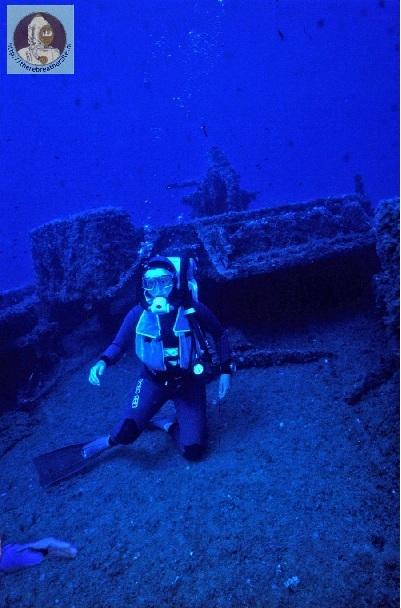
History
An exact date when the SCR principle was used is not known. However, it is known that the first production model for sport divers became available in the early 1990s. One of Dräger’s first SCRs was known as the Atlantis. After the Atlantis came an improved version, the Dolphin. The cost of a Dolphin rebreather was about 3,400 euros in 1996. After its introduction, SCR diving became increasingly popular. In the 1990s, electronic closed-circuit rebreathers were still extremely expensive and most rebreather sports divers dived with a semi-closed system. The Fieno rebreather was introduced in Japan and a good number of these units were sold worldwide. Later, at the end of the 1990s, the sports diving market switched to ECCR. Today, there are only a few half-closed rebreather manufacturers on the market and many more produce ECCR systems.
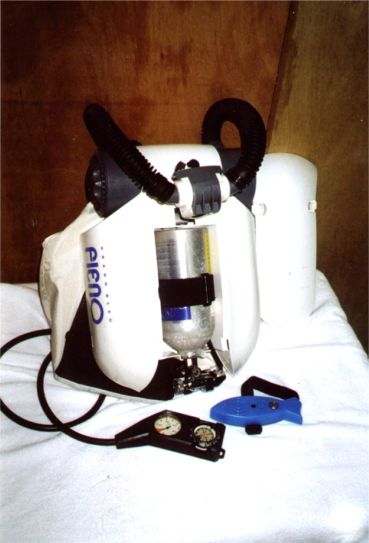
Advantage of using Nitrox in a semi-closed system.
Oxygen-enriched air causes lower nitrogen levels in the blood. The advantage of diving with Nitrox over OC diving lies mainly in longer dive times due to lower nitrogen absorption in the blood. This is because nitrox contains more oxygen and therefore less nitrogen is absorbed into the blood per unit time. The added advantage of an SCR is in the reuse of the nitrox gas, by partially reusing it. Dive depths, dive tables and nitrogen rates here are identical to normal Nitrox dives.
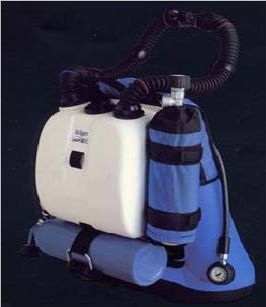
Reuse of gas
Reusing gas means that a significantly smaller amount of gas needs to be carried. This means that the construction of the diving system can be lighter and a smaller gas container will suffice. Typically, an SCR will be about 4 times more efficient compared to an open-circuit dive system. Significantly longer dive times can be achieved as a result.
Gas injection
Partial gas reuse is explained by the fact that Nitrox (EANx=enriched air Nitrox of a certain composition) is injected continuously. This is done via an injector with a permanent flow. By an injector, you should think of a perforated piece of hard metal with extreme precision that creates a constant flow.
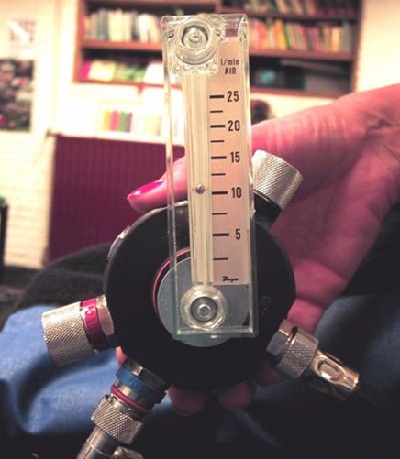
Overpressure and air bubbles
In nitrox, the injected gas contains nitrogen. As the body does not use this gas in its system, it returns to the loop and must be discharged outside. To this end, the counterlung has a pressure relief valve. This valve, which has a light-acting spring mechanism, allows the gas to be discharged at excess pressure. Because of this operation, this system is called a semi-closed system.
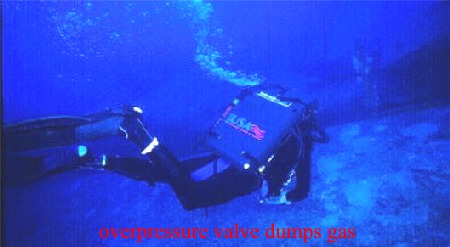
Gas injectors
Gas injectors are used to add a gas stream with a precise volume (mass). By making the injectors interchangeable, we can adjust the flow according to the composition of the injected gas. If a richer oxygen gas is used, a smaller injection is sufficient, as the human body uses exactly the same metabolism at any depth.
For example, the Dolphin Semi Closed Rebreather has the following flow rates
EAN60: 5.8 barL/min for 124 minutes with restriction MDD = 17 mtr
EAN50: 7.3 barL/min for 98 minutes with restriction MDD = 22 mtr
EAN40: 10.4 barL/min for 69 minutes with restriction MDD = 30 mtr
EAN32: 15.6 barL/min for 46 minutes with restriction MDD = 40 mtr
With a Nitrox mixture of 60% oxygen, a 124-minute dive to a depth of 17 metres is possible.
With a Nitrox mixture of 40% oxygen, a 69-minute dive to 30 mtr is possible.

Different types op SCR
Besides the active semi-closed rebreather, we also know passive systems and self-mixing systems. See this page
Half-closed equation
In real life: Because the mix is recycled and its composition depends on metabolic consumption, a dive with 40% Nitrox mix will result in an inhalation of 33,6% oxygen. If we dive and allow a maximum partial pressure of 1.5 bar of oxygen and want to make a dive to a maximum depth of 30 metres within the decompression limits, we calculate with EAN34, resulting in a maximum dive time of 25 minutes. Below, we will elaborate with calculations on how the actual fraction is calculated.
In a semi-closed system, the exhaled oxygen-depleted air will mix with the newly injected gases. As a result, the diver’s metabolism will reduce the gas in oxygen fraction (percentage). To calculate the fraction breathed on average, we know the semi-closed equation. This involves calculating the metabolism and the injected gas using the following formula:

- FiO2 = inhaled fraction by the diver (%oxygen/100)
- Qs = The volume of breathing gas that is being injected continuously (L/min)
- VO2 = The volume of the diver’s metabolised oxygen (l/min)
- FSO2 = The O2 fraction in the injected breathing gas (% oxygen/100)
If, in an active semi-closed system, we inject nitrox with 50% oxygen at 7.3 litres per minute and the diver metabolises 0,9 l oxygen per minute this will result in:

Because the diver consumes the same amount of oxygen at all depths, the fraction will remain more or less the same with depth. However, the oxygen partial pressure does increase with depth. Therefore, with an oxygen fraction of 43%, at a permissible partial oxygen pressure of, say, 1.3 bar, a depth of 1.3 / 0.43 = 3.02 will only allow 20 metres to be dived with this mix. In this case, the manufacturer specifies a maximum dive depth of 22 metres at EAN 50, but as the calculation shows, this is linked to the diver’s metabolism!
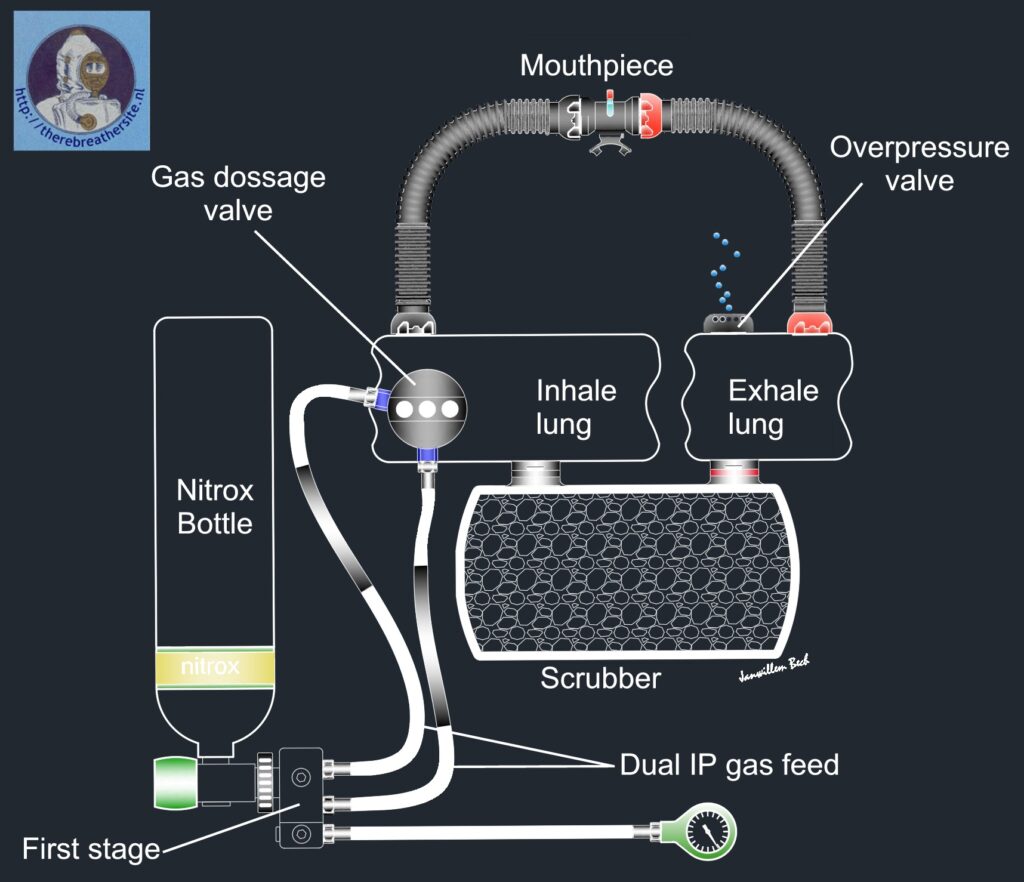
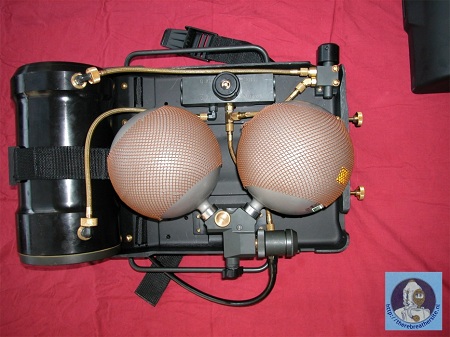

Therebreathersite was founded by Jan Willem Bech in 1999. After a diving career of many years, he decided to start technical diving in 1999. He immediately noticed that at that time there was almost no website that contained the history of closed breathing systems. The start for the website led to a huge collection that offered about 1,300 pages of information until 2019. In 2019, a fresh start was made with the website now freely available online for everyone. Therebreathersite is a source of information for divers, researchers, technicians and students. I hope you enjoy browsing the content!
